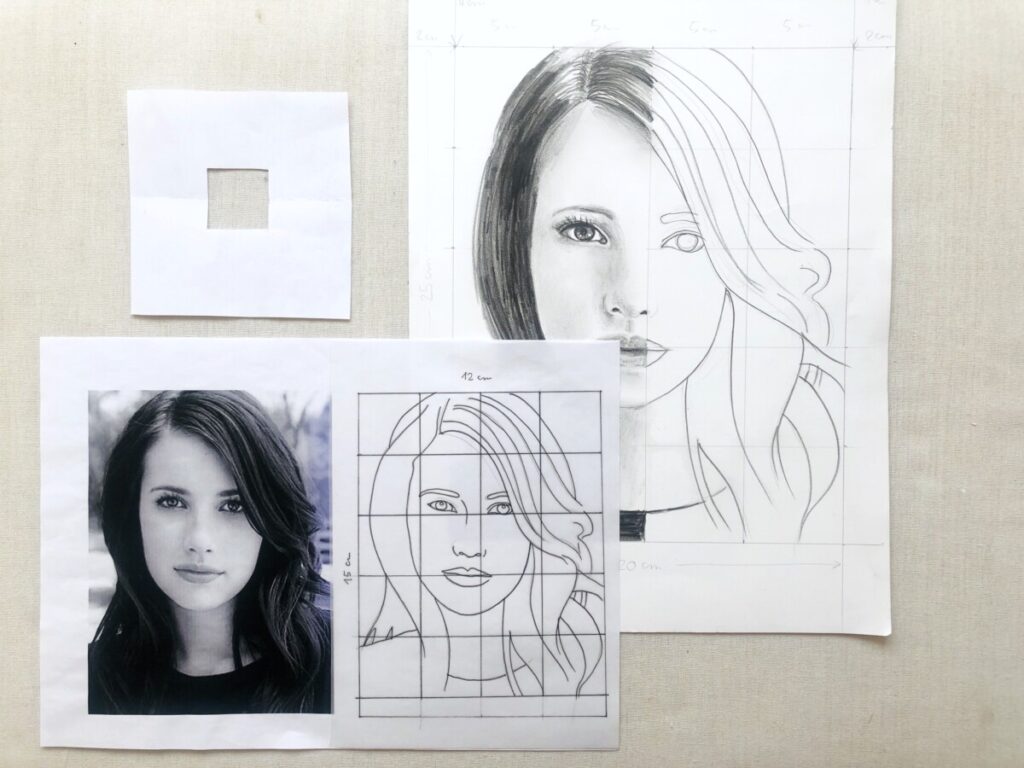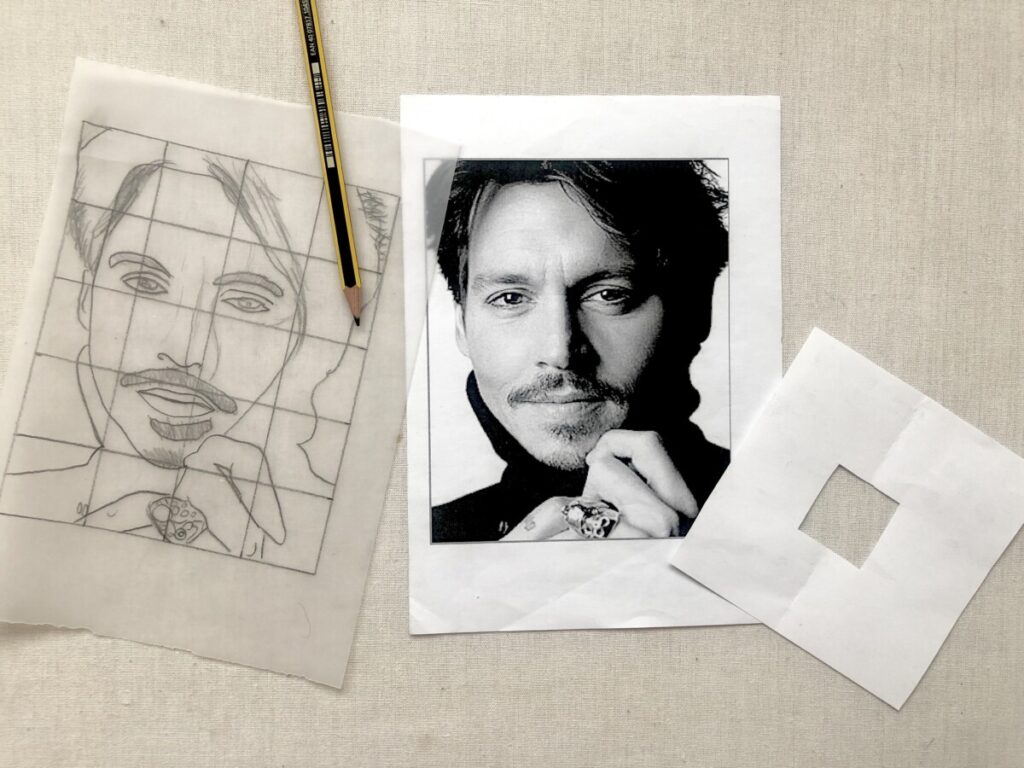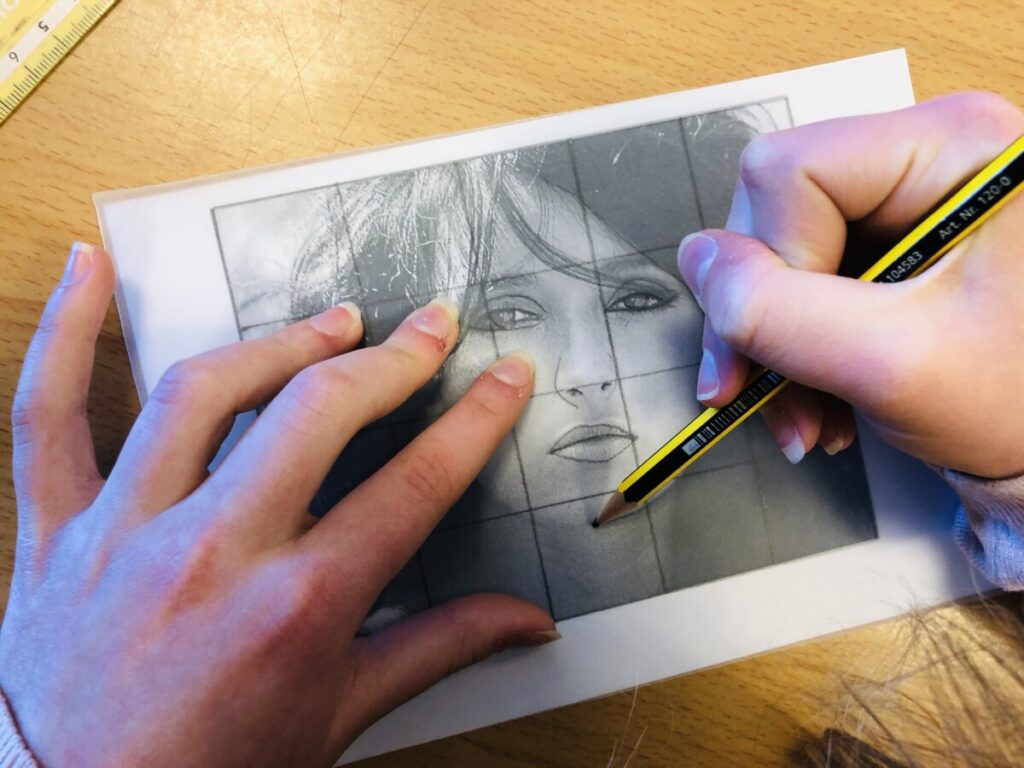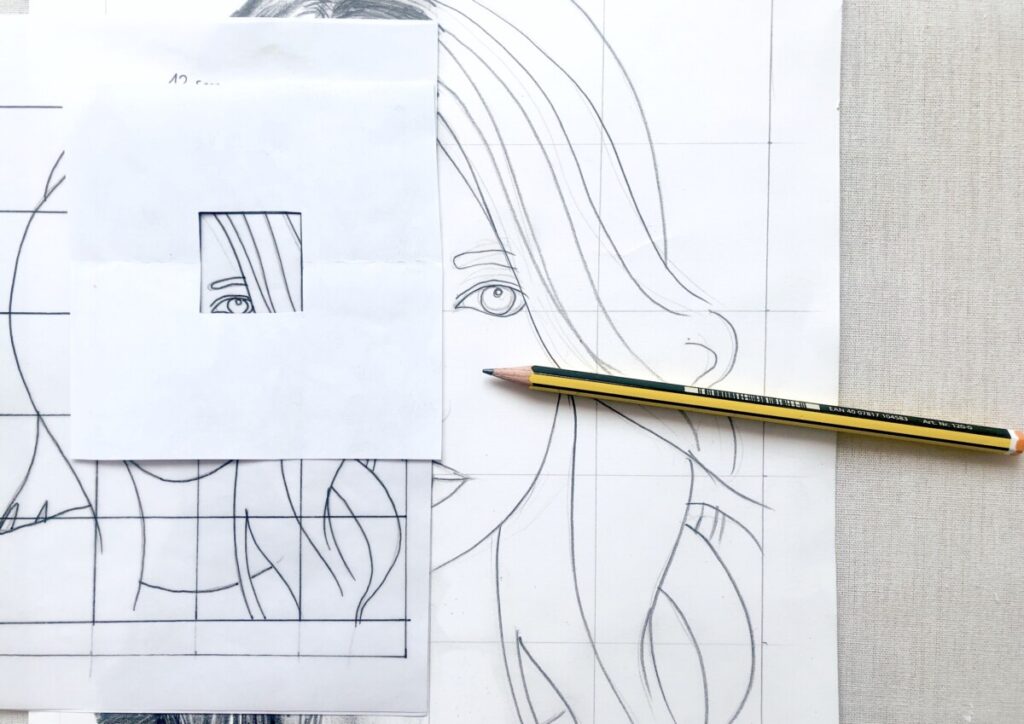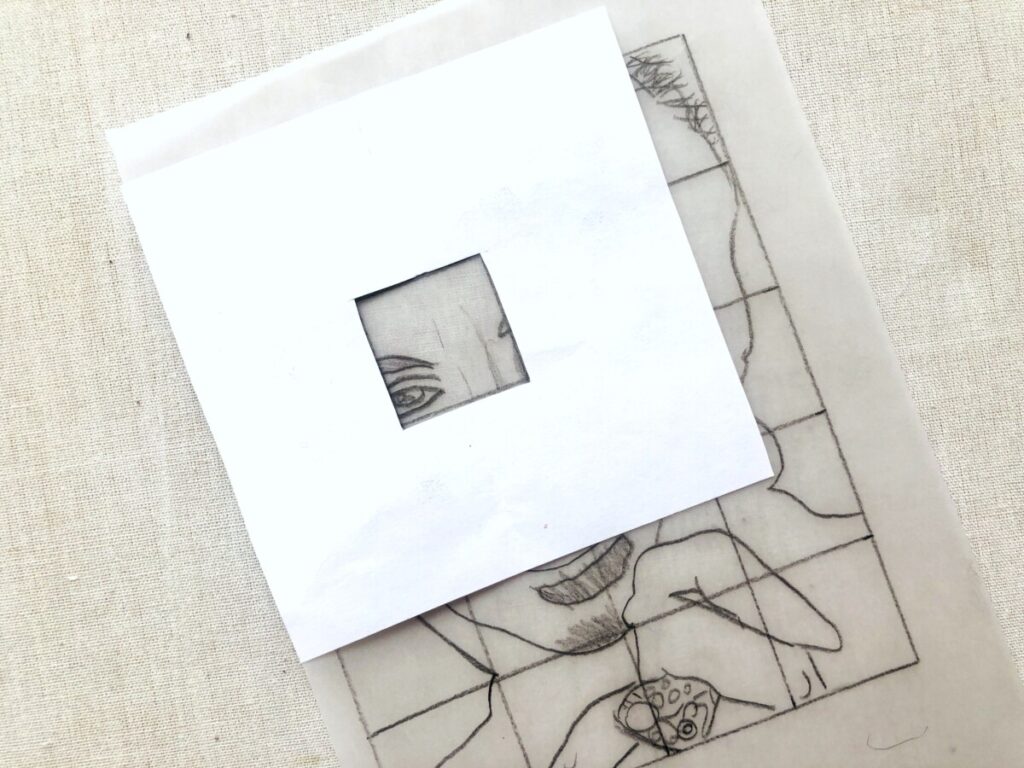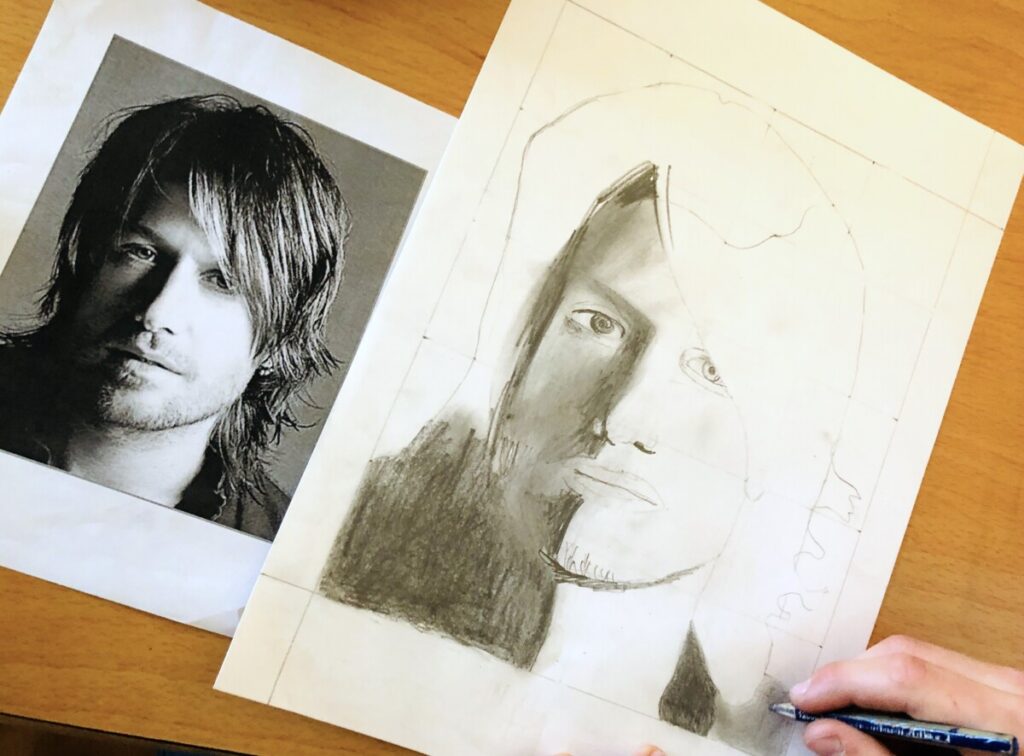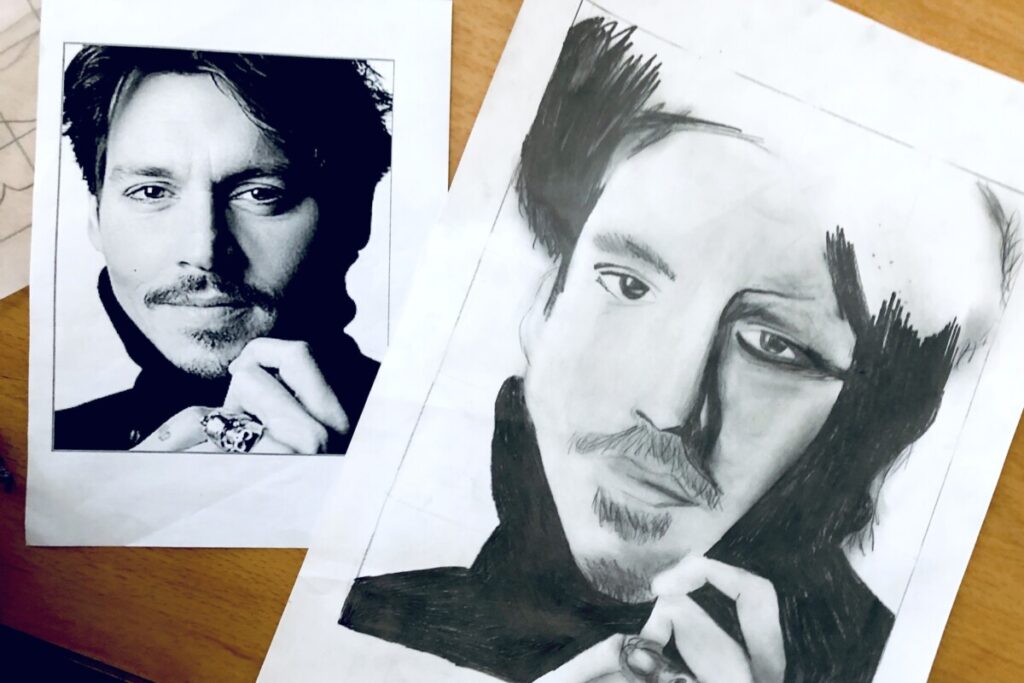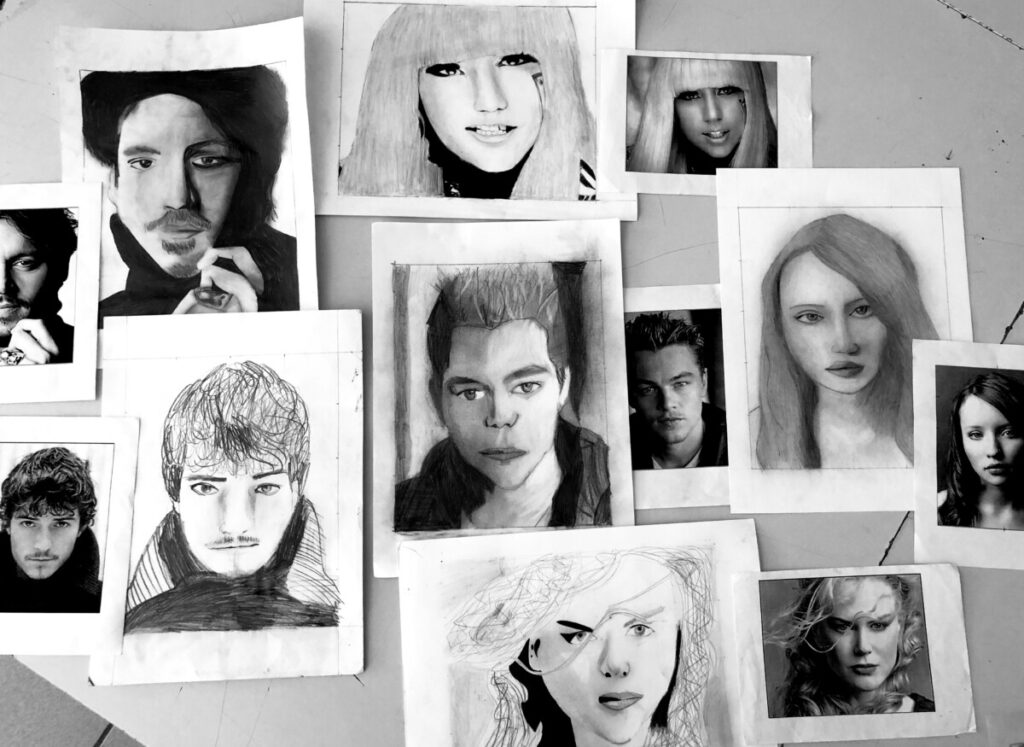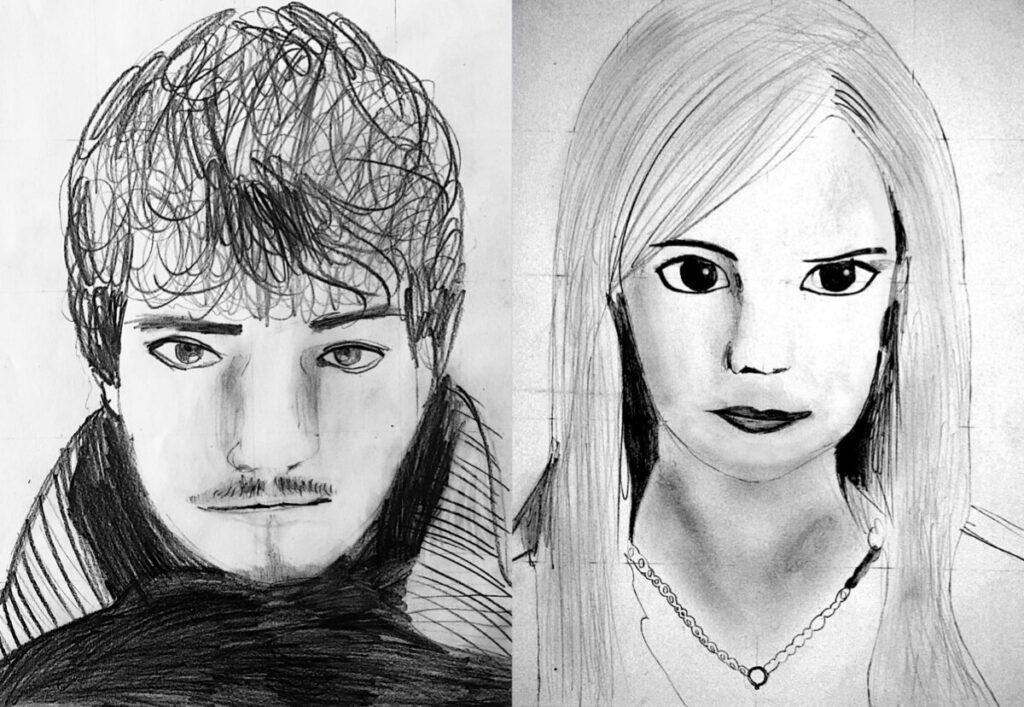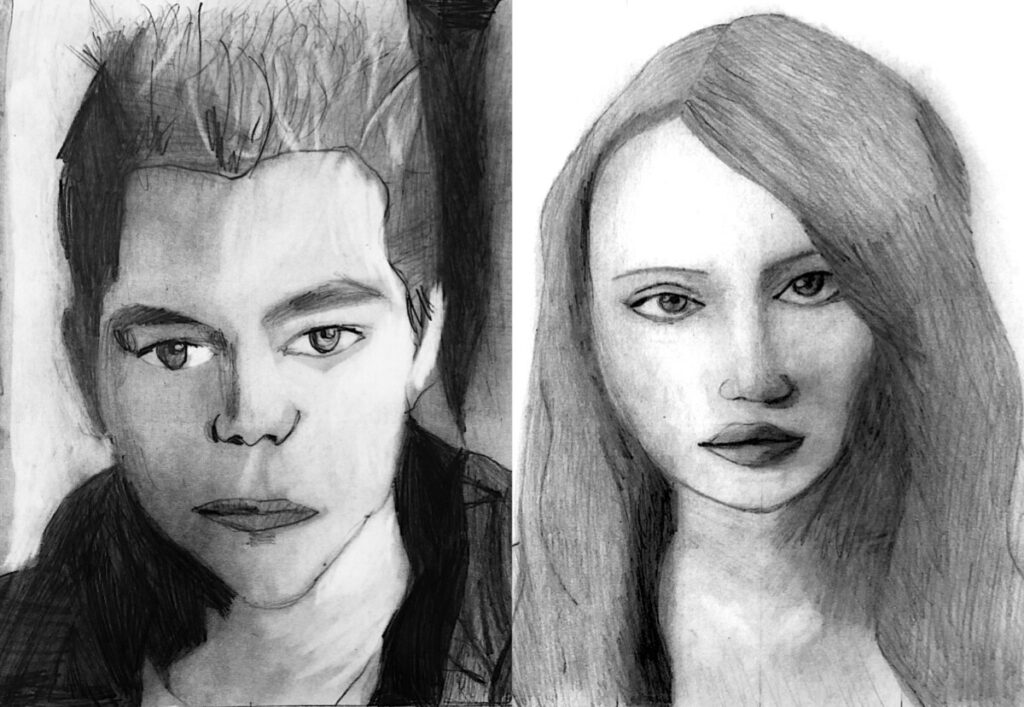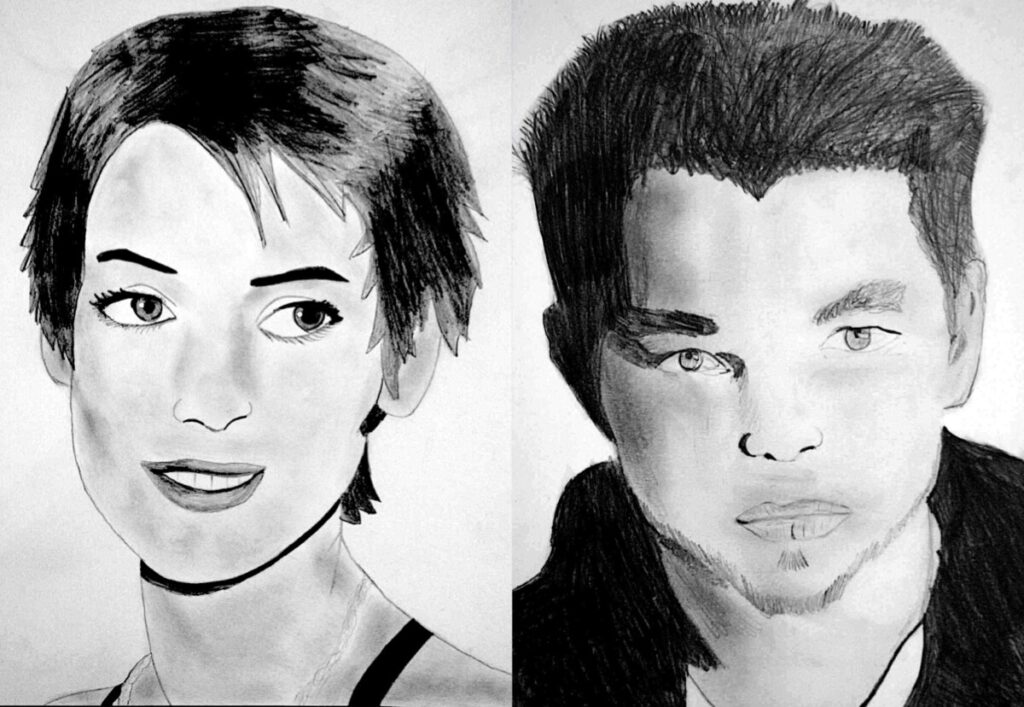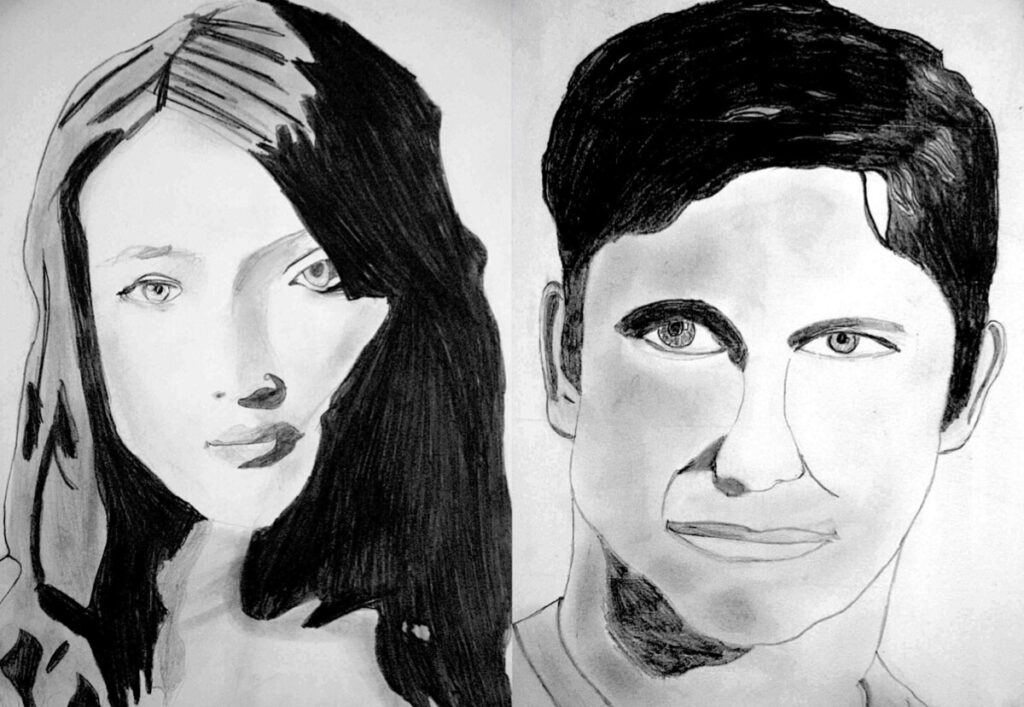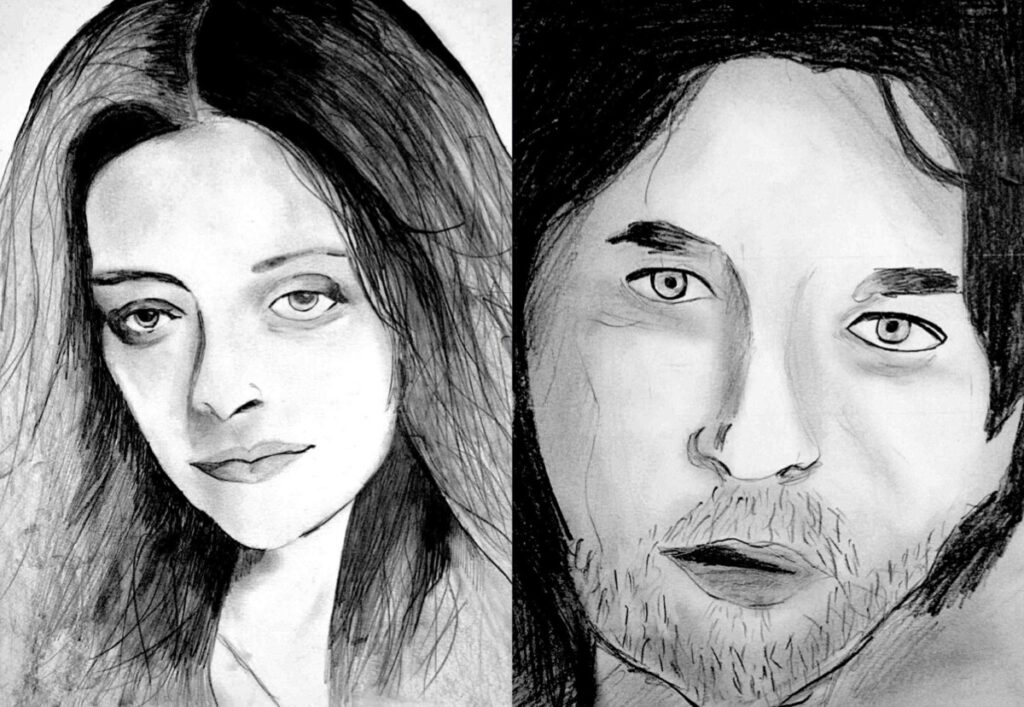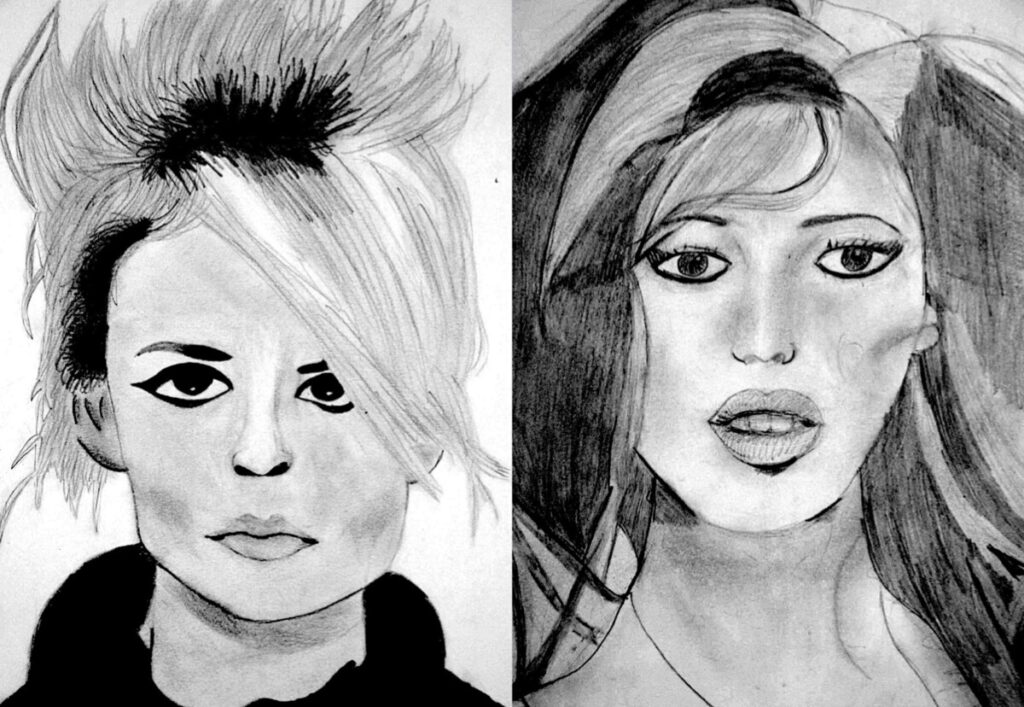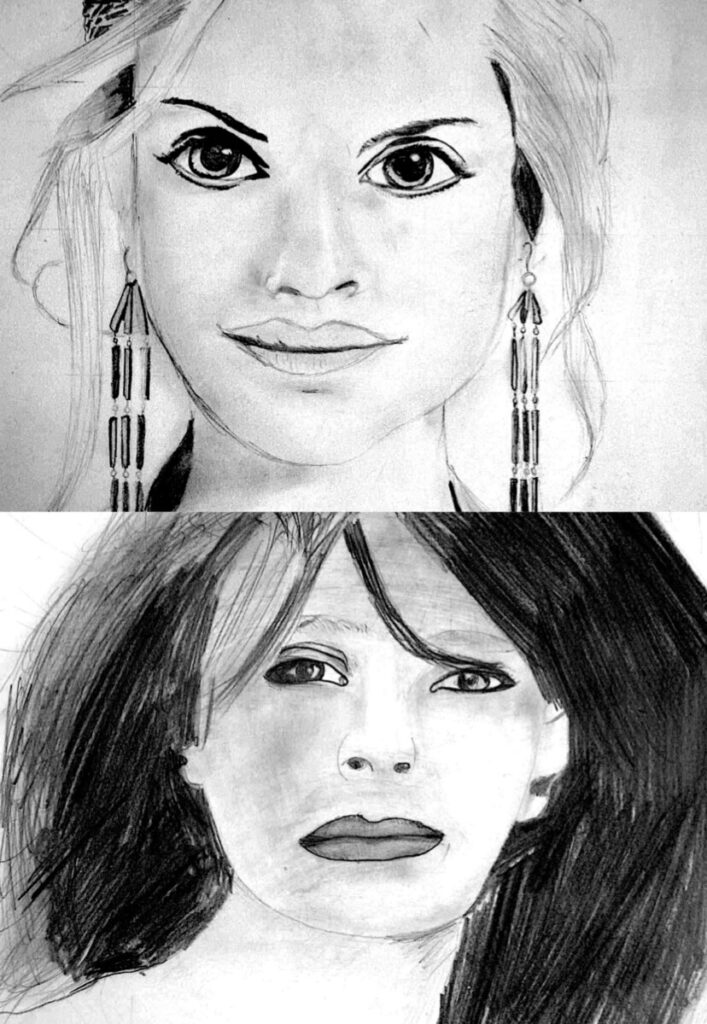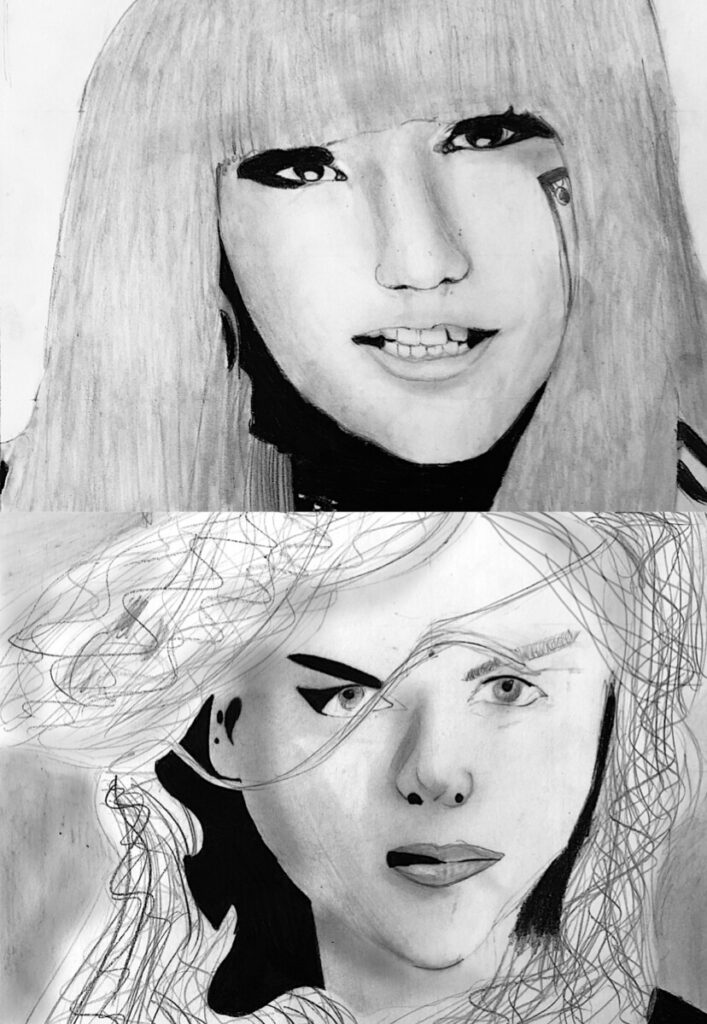We created these photographic portrait copies using the grid method and learned a fairly simple way to zoom and reproduce an image. The portrait is one of the most difficult things to copy but with this method, we have managed to achieve good results, because it is based on the careful observation of the LINES and on the copy of portions of the image, and not of the whole image.
To start we chose a small black and white photograph of a face (12x15cm). On tracing paper we traced the outline of the image and traced a GRID with 3x3cm squares. Then we drew on the tracing paper the MAIN LINES of the face with eyes, nose, mouth, eyebrows, then we drew the head, hair, and even the CONTOUR lines of the shadow.
It is important to remember that in this first phase of tracing, the image must be simplified and reduced in the MAIN LINES that compose it: there is no need to color shadows or chiaroscuro.
After that, we trace a rectangle of 20x25cm divided into 5x5cm squares on a drawing sheet. In this way, we have an enlarged scale grid where we can start copying our LINEAR DRAWING. The secret, in this second phase, is to copy the lines square by square, without worrying about the final image, but only caring about reproducing the lines present inside that specific square.
To help us in this phase, we cut out a sort of small “VIEWFINDER” from a white sheet, a 3×3 square frame. We place this viewfinder on each square of the smaller grid in order to ISOLATE the lines and shapes inside that square. In this way we can focus on the copy of the lines square by square, respecting the proportions of the original image.
In the third phase, when the whole drawing is drawn with LINES on the drawing sheet, we can erase the construction lines of the grid and copy the chiaroscuro from the photo. Here too there is a little secret: the grayscale we use must be very wide, and go from intense black to white, through all possible shades of gray.
I noticed that there is a certain fear of using BLACK as if to risk ruining our drawing, yet it is the chiaroscuro passages that will make our drawing alive and three-dimensional. Here too it is only a question of copying the shades from the photo, trying to be as faithful as possible to what we see. The results are very satisfying!
Ecco i disegni finiti


